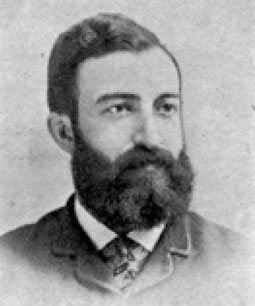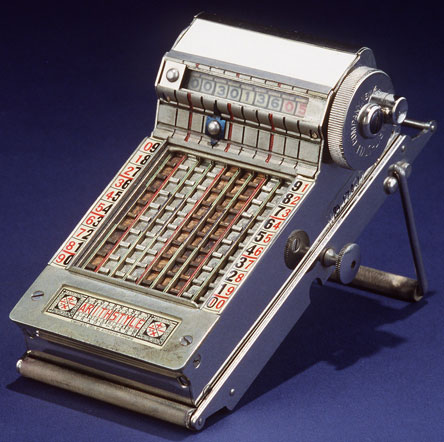
Arithmachine of Henry Goldman

The Arithmachinist: A Practical Self Instructor in Mechanical Arithmetic was published in Chicago, USA, in 1898. In its 158 pages, the author — Henry Goldman — provided a panorama of existing adding machines and examined many calculating devices, including those of Stephenson, Lightning, Webb, Jewett, Locke, Wilson, McClelland, Landin, Wiberg, Thomas, Tate, Burkhardt, Baldwin, Grant, Spaulding, Bouchet, Contograph, Hopkins, Thatcher, Odhner, Brunsviga, Fuller, Thompson, Smith, Sexton, etc. In addition, Goldman also proposed his own adding machine, the so-called Arithmachine.
Heinrich Goldmann (aka Henry Goldman) was an Austrian Jew who was born in Vienna in 1859. He came to the United States in 1881 and published works on improved bookkeeping and office machines. In the 1890s, he invented his own adding machine, which he manufactured in Chicago in his company International Arithmachine Co. The 1899 price was $24 to $48. In 1905, Goldman left the United States for Berlin, where he arranged to have his adding machine manufactured by Gesellschaft für Maschinenbau GmbH, Berlin, as the Contostyle. The Arithstyle was a similar machine to Goldman’s design, manufactured in New York sometime after 1910 by Arithstyle Co.
Goldmann received quite a few US and foreign patents for Arithmachine and its successors — US patents №№ 624788, 617094, 669969, 669970, 681781, patents in Germany, Great Britain, Switzerland, etc.

This small metal pocket calculator, with dimensions 4½” x 1½” x 3½” and weighing about a pound, has nine columns of chains. The two rightmost are silver-colored, the next three copper-colored, the next three silver-colored, and the leftmost copper-colored. On the back of the chains are nine numeral wheels with digits from 0 to 9 on them. Digits are marked in red and in black on plastic strips to the right and to the left of the chains. A zeroing wheel is on the right side, with a release button below it for resetting everything to zero. A movable metal decimal marker is attached to the machine between the chains and the numeral wheels. The metal stand has a rubber covering along the two edges of its base. The black wooden case is covered with leather and lined with fabric-covered paper.
The machine is operated by a series of endless chains which are pulled by a stylus. It has a top sliding index plate with a Celluloid inset that can be written on with a pencil. There is a sliding index button at each side of the readout and a sliding index pointer below the readout.
The Arithmachine of Henry Goldman was exhibited at the Pan-American Exposition in New York in 1901 and featured in a number of magazines. The company marketed the product to bookkeepers, banks, and related industries, as a device that was “Brain resting, labor-saving. Readily understood. Easily operated.” and “Saves Expert’s Mental Strain!”. The Arithmachine was the prototype for another quite popular device Golden Gem, which had a long market success through the first half of the 20th century.
Henry Goldman died on 28 February 1912, in New York.
The image featured at the top of this post is ©Unknown author / public domain.
